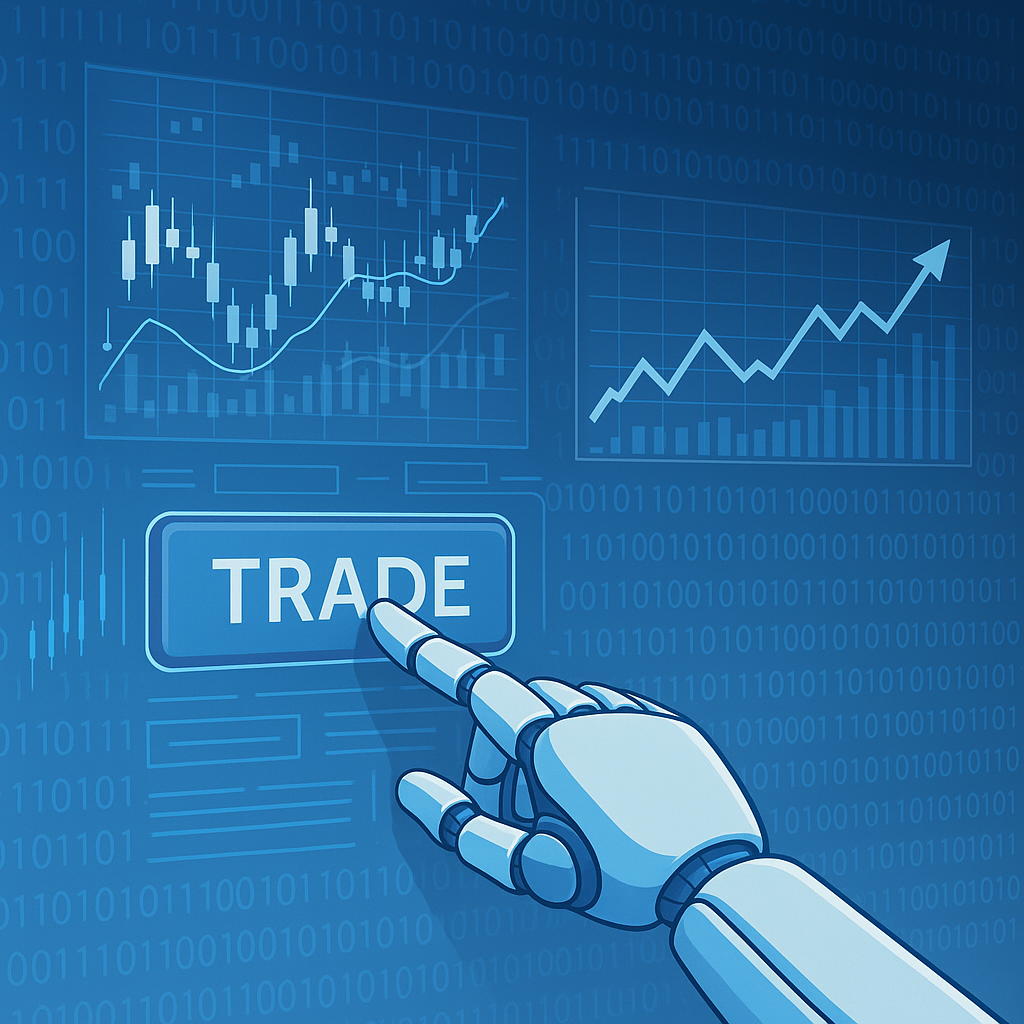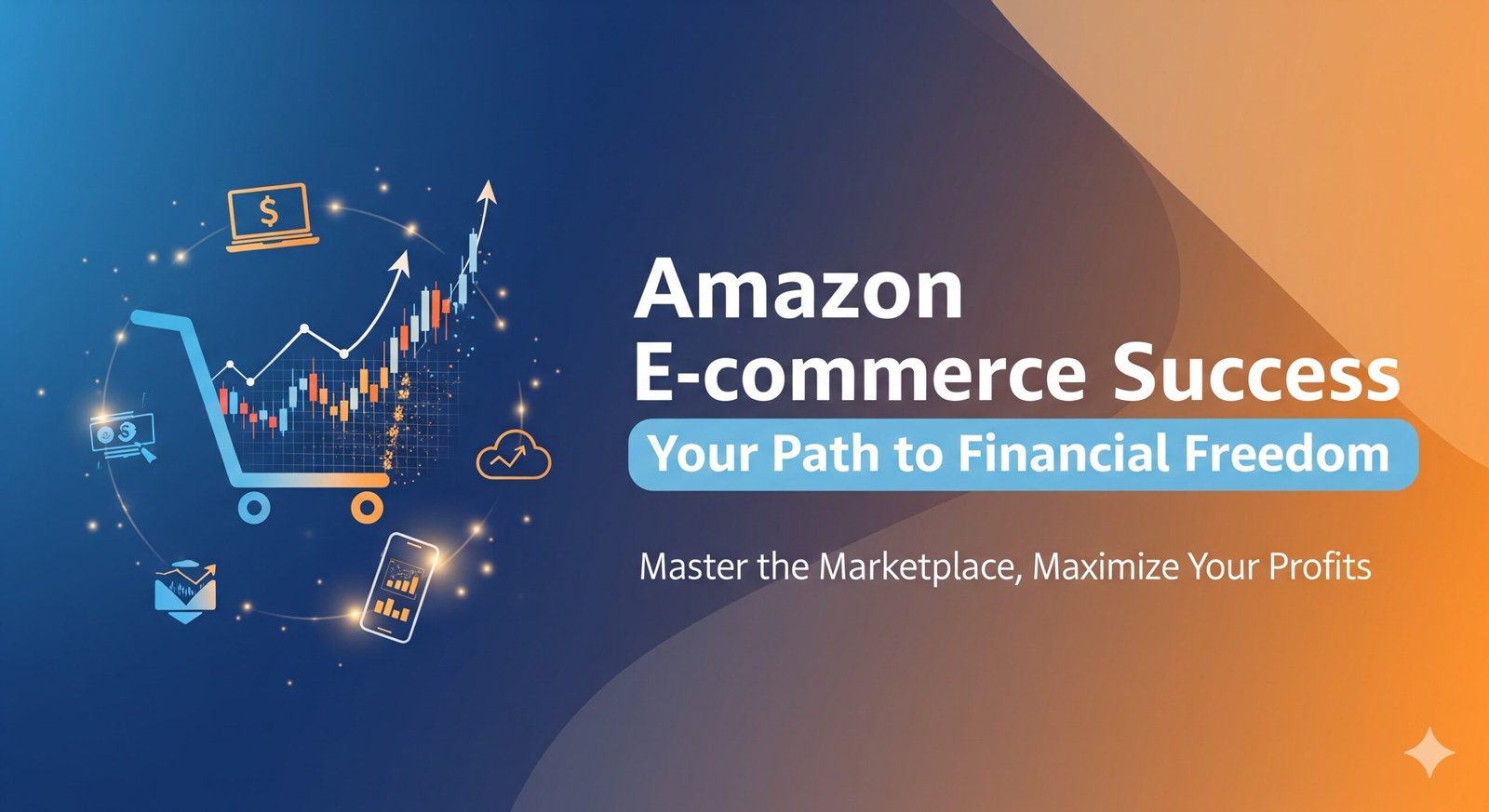Algorithmic trading, often referred to as “algo trading” or automated investing, has transformed the financial markets in recent years. As technology advances, more individuals and institutions are turning to algorithms to execute trades with precision, speed, and efficiency. But what exactly is algorithmic trading, and how does it work? In this comprehensive beginner’s guide to algorithmic trading in 2025, we’ll explore the fundamentals, strategies, benefits, risks, and tools involved in this cutting-edge approach to investing. Whether you’re new to trading or curious about automation, this 4,000-word guide will provide a clear and detailed overview without offering investment advice.
Table of Contents
- What Is Algorithmic Trading?
- How Does Algorithmic Trading Work?
- The History of Algorithmic Trading
- Types of Algorithmic Trading Strategies
- Benefits of Algorithmic Trading
- Risks and Challenges of Algorithmic Trading
- Tools and Platforms for Algorithmic Trading
- Algorithmic Trading vs. Manual Trading
- Who Uses Algorithmic Trading?
- Getting Started with Algorithmic Trading in 2025
- Common Myths About Algorithmic Trading
- The Future of Algorithmic Trading
- Frequently Asked Questions (FAQs)
- Conclusion
1. What Is Algorithmic Trading?
Algorithmic trading is the process of using computer programs or algorithms to execute trades in financial markets based on predefined rules or criteria. These algorithms analyze market data, identify trading opportunities, and automatically place buy or sell orders without human intervention. The goal is to execute trades faster, more efficiently, and at optimal prices compared to manual trading.
In 2025, algorithmic trading is widely used across various asset classes, including stocks, forex, cryptocurrencies, commodities, and derivatives. It’s popular among institutional investors like hedge funds and banks, but retail traders are increasingly adopting algo trading thanks to accessible platforms and tools.
Key Features of Algorithmic Trading
- Automation: Trades are executed automatically based on programmed instructions.
- Speed: Algorithms process data and execute trades in milliseconds.
- Precision: Algo trading minimizes human errors and emotional biases.
- Scalability: Algorithms can handle large volumes of trades across multiple markets.
By leveraging advanced technology, algorithmic trading enables traders to capitalize on market opportunities that may be too complex or fleeting for manual execution.
2. How Does Algorithmic Trading Work?
At its core, algorithmic trading relies on a combination of computer programming, data analysis, and market connectivity. Here’s a step-by-step breakdown of how algorithmic trading works:
Step 1: Define Trading Rules
The trader or developer creates an algorithm based on specific trading rules or strategies. These rules could be based on technical indicators (e.g., moving averages), price patterns, or fundamental data (e.g., earnings reports).
Step 2: Data Analysis
The algorithm continuously monitors real-time market data, such as price movements, trading volume, and order book information. It uses this data to identify trading opportunities that match the predefined criteria.
Step 3: Trade Execution
Once a trading opportunity is identified, the algorithm automatically sends buy or sell orders to the market. This process happens in fractions of a second, ensuring trades are executed at the best possible prices.
Step 4: Risk Management
Most algorithms include risk management features, such as stop-loss orders or position sizing, to limit potential losses and protect capital.
Step 5: Monitoring and Optimization
After trades are executed, the algorithm monitors performance and may adjust its strategy based on market conditions. Developers often backtest and refine algorithms to improve their effectiveness.
Example of Algorithmic Trading
Imagine an algorithm programmed to buy 100 shares of a stock when its 50-day moving average crosses above its 200-day moving average (a bullish signal). If the algorithm detects this crossover, it places the buy order instantly. Conversely, it might sell the shares if the stock price drops below a certain threshold.
This automated process eliminates the need for a trader to manually monitor charts or place orders, making it ideal for fast-paced markets.
3. The History of Algorithmic Trading
Algorithmic trading has evolved significantly since its inception. Here’s a brief timeline of its development:
- 1970s-1980s: The rise of computers in finance paved the way for early forms of automated trading. Institutional investors began using basic algorithms to process large orders.
- 1990s: The introduction of electronic trading platforms and decimalization in stock markets increased the adoption of algo trading.
- 2000s: High-frequency trading (HFT), a subset of algorithmic trading, emerged, enabling firms to execute thousands of trades per second.
- 2010s: Advancements in artificial intelligence (AI) and machine learning (ML) enhanced algo trading strategies, making them more adaptive and sophisticated.
- 2025: Algorithmic trading is now accessible to retail traders through user-friendly platforms, and AI-driven algorithms dominate institutional trading.
Today, algo trading accounts for a significant portion of trading volume in major markets, with estimates suggesting it represents over 70% of equity trading in the U.S.
4. Types of Algorithmic Trading Strategies
Algorithmic trading encompasses a wide range of strategies, each designed to achieve specific objectives. Below are some of the most common algo trading strategies used in 2025:
1. Trend-Following Strategies
These algorithms identify and capitalize on market trends using technical indicators like moving averages, relative strength index (RSI), or Bollinger Bands. They aim to buy during uptrends and sell during downtrends.
2. Arbitrage
Arbitrage algorithms exploit price differences for the same asset across different markets or exchanges. For example, an algorithm might buy a cryptocurrency on one exchange where it’s cheaper and sell it on another where it’s priced higher.
3. Market Making
Market-making algorithms provide liquidity by placing both buy and sell orders for an asset. They profit from the bid-ask spread while maintaining a neutral market position.
4. High-Frequency Trading (HFT)
HFT algorithms execute thousands of trades in microseconds, capitalizing on tiny price movements. HFT is typically used by large institutions with access to advanced technology.
5. Mean Reversion
These algorithms assume that asset prices will revert to their historical averages. They buy when prices are below the mean and sell when prices are above it.
6. Sentiment-Based Trading
Using AI and natural language processing (NLP), these algorithms analyze news, social media, and other data sources to gauge market sentiment and make trading decisions.
7. Volume-Weighted Average Price (VWAP)
VWAP algorithms break large orders into smaller chunks to execute trades at prices close to the average market price, minimizing market impact.
Each strategy requires careful design and testing to ensure it performs effectively in real-world conditions.
5. Benefits of Algorithmic Trading
Algorithmic trading offers several advantages over manual trading, making it a popular choice for both institutional and retail traders. Here are the key benefits of algo trading:
1. Speed and Efficiency
Algorithms execute trades in milliseconds, far faster than any human trader. This speed is critical in volatile markets where prices change rapidly.
2. Elimination of Emotional Bias
By automating trades, algorithms remove emotional factors like fear or greed, ensuring decisions are based solely on data and logic.
3. Consistency
Algorithms follow predefined rules consistently, reducing the likelihood of errors or deviations from the trading plan.
4. Cost Reduction
Algo trading can lower transaction costs by optimizing trade execution and minimizing market impact. It also reduces the need for manual labor in trading operations.
5. Scalability
Algorithms can monitor and trade across multiple markets and assets simultaneously, something impossible for a human trader to achieve.
6. Backtesting Capabilities
Traders can test algorithms on historical data to evaluate their performance before deploying them in live markets.
These benefits make algorithmic trading an attractive option for those seeking efficiency and precision in their trading activities.
6. Risks and Challenges of Algorithmic Trading
While algorithmic trading offers numerous advantages, it’s not without risks and challenges. Understanding these is crucial for anyone exploring automated investing in 2025. Here are the main risks:
1. Technical Failures
Glitches, software bugs, or connectivity issues can disrupt trading and lead to significant losses. Reliable infrastructure is essential for algo trading.
2. Over-Optimization
Algorithms that perform well in backtesting may fail in live markets due to overfitting—when a strategy is too tailored to historical data.
3. Market Volatility
Sudden market events, such as flash crashes, can trigger unintended trades or amplify losses if algorithms aren’t designed to handle extreme conditions.
4. Regulatory Risks
Algo trading is subject to strict regulations in many markets. Non-compliance with rules can result in fines or trading restrictions.
5. High Initial Costs
Developing and maintaining algorithms, as well as accessing high-quality data feeds and infrastructure, can be expensive, especially for retail traders.
6. Lack of Human Judgment
Algorithms lack the intuition and adaptability of human traders, which can be a disadvantage in unpredictable markets.
To mitigate these risks, traders must thoroughly test algorithms, implement robust risk management, and stay informed about market and regulatory changes.
7. Tools and Platforms for Algorithmic Trading
In 2025, a wide range of tools and platforms are available for algorithmic trading, catering to both beginners and advanced traders. Here are some popular options:
1. Programming Languages
- Python: Widely used for its simplicity and extensive libraries (e.g., Pandas, NumPy) for data analysis and algo development.
- R: Popular for statistical analysis and backtesting trading strategies.
- C++: Preferred for high-frequency trading due to its speed and efficiency.
2. Trading Platforms
- MetaTrader 5 (MT5): A retail-friendly platform with built-in algo trading features and support for Expert Advisors (EAs).
- Interactive Brokers: Offers an API for custom algo development and access to global markets.
- QuantConnect: A cloud-based platform for designing, backtesting, and deploying algorithms.
- Alpaca: A commission-free platform with an API for retail traders interested in algo trading.
3. Data Providers
- Bloomberg Terminal: Provides real-time market data and analytics for institutional traders.
- Quandl: Offers financial and alternative data for algo development.
- Alpha Vantage: A free API for historical and real-time market data.
4. Backtesting Tools
- Backtrader: A Python-based framework for testing trading strategies.
- TradeStation: Offers advanced backtesting and optimization tools.
5. Cloud Computing
- Amazon Web Services (AWS): Used for scalable computing power in algo development.
- Google Cloud: Supports AI and machine learning for advanced algorithms.
Choosing the right tools depends on your skill level, budget, and trading goals. Beginners may prefer user-friendly platforms like MetaTrader, while advanced traders might opt for custom solutions using Python or C++.
8. Algorithmic Trading vs. Manual Trading
To better understand algorithmic trading, it’s helpful to compare it with manual trading. Here’s a breakdown of the key differences:
| Aspect | Algorithmic Trading | Manual Trading |
|---|---|---|
| Speed | Executes trades in milliseconds | Slower, depends on human reaction time |
| Emotion | Eliminates emotional bias | Prone to fear, greed, or hesitation |
| Consistency | Follows rules consistently | May deviate due to fatigue or judgment |
| Scalability | Monitors multiple markets simultaneously | Limited by human capacity |
| Cost | High setup costs but lower transaction costs | Lower setup costs but higher manual effort |
| Complexity | Requires programming and technical skills | Relies on market knowledge and intuition |
While algo trading excels in speed and efficiency, manual trading allows for greater flexibility and human judgment. Many traders combine both approaches to balance automation with intuition.
9. Who Uses Algorithmic Trading?
Algorithmic trading is used by a diverse group of market participants, each with different objectives:
1. Institutional Investors
- Hedge Funds: Use algo trading for arbitrage, HFT, and complex strategies.
- Investment Banks: Employ algorithms for market making and client order execution.
- Pension Funds: Use VWAP and other algorithms to execute large orders efficiently.
2. Retail Traders
- Individual traders use platforms like MetaTrader or Alpaca to automate simple strategies, such as trend-following or mean reversion.
3. Proprietary Trading Firms
- These firms specialize in HFT and arbitrage, leveraging cutting-edge technology to profit from small price movements.
4. Market Makers
- Market makers use algorithms to provide liquidity by continuously quoting buy and sell prices.
5. Crypto Traders
- The 24/7 nature of cryptocurrency markets makes algo trading ideal for executing trades across global exchanges.
In 2025, advancements in technology have made algo trading accessible to retail traders, democratizing a field once dominated by institutions.
10. Getting Started with Algorithmic Trading in 2025
If you’re a beginner interested in algorithmic trading for beginners, here’s a step-by-step guide to get started:
Step 1: Learn the Basics
Understand financial markets, trading concepts, and technical indicators. Resources like online courses, books, and forums can help.
Step 2: Develop Programming Skills
Learn a programming language like Python or R. Free tutorials on platforms like Codecademy or Coursera are great starting points.
Step 3: Choose a Strategy
Start with a simple strategy, such as trend-following or mean reversion, and define clear trading rules.
Step 4: Backtest Your Algorithm
Use historical data to test your algorithm’s performance. Platforms like QuantConnect or Backtrader simplify this process.
Step 5: Select a Trading Platform
Choose a platform that suits your needs, such as MetaTrader for forex or Alpaca for stocks.
Step 6: Start Small
Begin with a demo account to test your algorithm in real-time without risking capital. Gradually transition to live trading with small amounts.
Step 7: Monitor and Refine
Continuously monitor your algorithm’s performance and make adjustments based on market conditions.
Tips for Success
- Start with simple algorithms to build confidence.
- Stay updated on market trends and regulatory changes.
- Join online communities like Reddit’s r/algotrading for insights and support.
11. Common Myths About Algorithmic Trading
Despite its popularity, algorithmic trading is surrounded by misconceptions. Let’s debunk some common myths:
Myth 1: Algo Trading Guarantees Profits
Reality: No trading system is foolproof. Algorithms can lose money due to market volatility, technical issues, or poor design.
Myth 2: Algo Trading Is Only for Experts
Reality: Beginners can start with user-friendly platforms and simple strategies, gradually advancing as they gain experience.
Myth 3: Algo Trading Replaces Human Traders
Reality: Algorithms complement human traders by automating repetitive tasks, but human oversight is still essential.
Myth 4: Algo Trading Is Unregulated
Reality: Algo trading is subject to strict regulations in most markets to prevent market manipulation and ensure fairness.
Understanding these myths can help beginners approach algo trading with realistic expectations.
12. The Future of Algorithmic Trading
As we look ahead to 2025 and beyond, several trends are shaping the future of algorithmic trading:
1. Artificial Intelligence and Machine Learning
AI and ML are enabling algorithms to learn from data, adapt to changing markets, and develop more sophisticated strategies.
2. Retail Adoption
User-friendly platforms and low-cost tools are making algo trading accessible to retail traders worldwide.
3. Decentralized Finance (DeFi)
The rise of DeFi and blockchain technology is driving algo trading in cryptocurrencies, with algorithms executing trades on decentralized exchanges.
4. Regulatory Evolution
Regulators are introducing new rules to address the risks of algo trading, such as flash crashes and market manipulation.
5. Quantum Computing
Though still in its infancy, quantum computing could revolutionize algo trading by processing vast amounts of data at unprecedented speeds.
These trends suggest that algorithmic trading will continue to grow, offering new opportunities and challenges for traders.
13. Frequently Asked Questions (FAQs)
Q1: What is algorithmic trading?
Algorithmic trading is the use of computer algorithms to automate trading decisions and execute trades based on predefined rules.
Q2: Is algorithmic trading suitable for beginners?
Yes, beginners can start with simple strategies and user-friendly platforms, but learning programming and market basics is essential.
Q3: What are the risks of algorithmic trading?
Risks include technical failures, over-optimization, market volatility, and regulatory compliance issues.
Q4: Do I need to know programming to start algo trading?
While programming skills are helpful, some platforms allow beginners to use pre-built algorithms or visual interfaces.
Q5: How much capital is needed for algorithmic trading?
The capital required varies depending on the platform, asset class, and strategy. Some platforms allow trading with small amounts.
Q6: Is algorithmic trading legal?
Yes, algo trading is legal but subject to regulations in most markets to ensure fair and transparent trading.
14. Conclusion
Algorithmic trading has revolutionized the way financial markets operate, offering speed, efficiency, and precision that manual trading cannot match. In 2025, advancements in technology have made algo trading accessible to both institutional and retail traders, with a wide range of strategies, tools, and platforms available. While it offers significant benefits, such as automation and scalability, it also comes with risks like technical failures and market volatility.
This beginner’s guide to algorithmic trading has provided a comprehensive overview of how algo trading works, its strategies, tools, and future trends. Whether you’re exploring automated investing in 2025 or simply curious about this dynamic field, understanding the fundamentals is the first step toward success. By starting small, learning continuously, and testing thoroughly, you can navigate the world of algorithmic trading with confidence.








